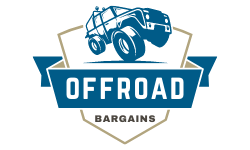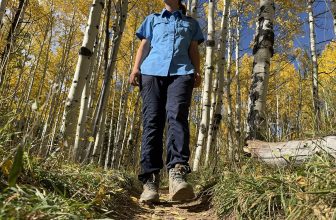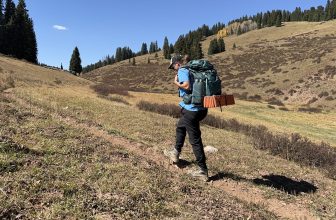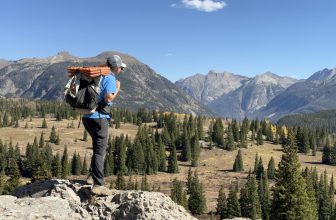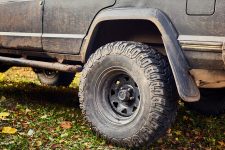
A Guide On Installing Hyline Inner Fender Liners
The amount of modifications you can do to a Jeep is endless. One of those mods is installing Hyline Offroad inner fender liners. If you have a Jeep with lifted suspension, flat fender flares, and a front bumper at just the right location, your front inner fender liners will be able to be seen much easier. Hearing things like Jeep Liberty fender flare removal, inner fender liners, and lift suspension kits can cause confusion in anyone that’s not familiar with Jeep modifications, but for those that enjoy modding their Jeeps, this is what instantly gets their attention.
When people are modifying their Jeeps, they sometimes regret not doing other upgrades at the same time. If you’ve ever installed Bushwacker flares, then you’ll know that one of the hardest parts is trimming the liners perfectly. Installing Hyline Offroad inner fender liners is a perfect mod to do at the same time as installing flares so that you’re saving on the labor involved.
Hyline Offroad inner fender liners are manufactured with aluminum and have two finishes that you can purchase them in:
- Unpainted raw finish
- Black powder finish
You’ll notice that there’s a little mesh panel that’s located behind the logo on the product. The purpose of this panel is so that heat can escape from the engine. If you’re wanting to get the panel to match the color of your Jeep, just purchase a can of paint.
How To Replace Inner Fender Liners
Installing Hyline Offroad inner fender liners isn’t a very hard project. You’ll only need to make one hole with a drill throughout the entire installation process. Aside from that, there aren’t any other big mods that need to be done to the Jeep.
The compatibility of Hyline inner fender liners will work with the factory flares and many of the other aftermarket options for your Jeep. One Jeep owner stated that they work very well with Bushwacker Flat Flares, noting that there is just a tiny bit of clearance on the rear part of the flare.
Keep in mind that this specific installation was done on a vehicle that had Bushwacker flares installed, so that’s why you see references to Bushwacker.
There are a couple of tools and supplies you’ll need to get the project going:
- 10mm, 3/8” & 7/16” sockets
- 7/16” wrench
- 1/8”, 5/32” & 3/16” Allen wrenches
- Drill & 9/32” Bit
- A utility knife (this will be used to trim fenders)
- #2 Phillips head screwdriver (this will be used for Bushwacker flare removal)
- Rubbing alcohol
- Replacement Bushwacker fender beading
What Does The Process Involve?
When you receive your Hyline inner fenders, you’ll notice that they come disassembled. This is obviously done to save a bunch of space. You’ll also notice that the product is in very good shape when it arrives, and that seems to be a trend with a lot of Hyline products on the market.
The first step in the process involves putting the liners together. Hyline states that you should apply some anti-seize lubricant on the hardware throughout the installation process, so ensure that you have some of that nearby.
There are eight 10-32 button head bolts and lock nuts on each side of the mesh panel. Some people like to do a little painting here if they want colors to match up with the fender liners, but they even look good in their raw form.
The rest of the panels are secured with 1/4″ – 20 button head bolts and locknuts.
The nuts will be used on the upper side of the panel.
You might want to place your panels on a softer surface so they don’t get any scratches or nicks in them when they are being put together. If you have any cardboard laying around, you can place the panels on that. It’s a little difficult for the panels to be completely flat when you’re bolting them together, so keeping them on the cardboard will help through this step.
When you’ve got the bolt liners assembled, take another look to ensure all of the hardware looks exactly how it should. With the number of bolts being used here at sometimes weird positions, it can be easy to miss one.
The next stage of the process is to take off the Bushwacker flares (if you have them installed).
This involves taking all of the screws off using a #2 Phillips head screwdriver.
After finishing that, you’ll start pulling the fender flare from the body of the Jeep. You’ll notice little remnants of adhesive, but that’s normal and it’ll be cleaned up before you make your way to putting the flares back on.
Next, you’ll get a 10mm socket and take off all of the fasteners that are securing the fender liner to the body. The fastener located at the very back will be secured to a stud right on the body of the vehicle. This might seem a little strange, but the stud is actually a bolt that slides through a threaded sleeve in the body of the vehicle. This bolt can be taken out of the engine compartment.
Once that’s done, you can now take out both of the push clips situated on the leading edge of the fender liners.
Take off the fender liner from the Jeep. Attach a clip nut in place.
The Bushwacker fender supports have two bolts that need to be taken out. You’ll be installing button head bolts that will be threaded to the fender liners.
Install the fender liner using three of the button head bolts that were provided with the hardware kit. These bolts will be threaded into the fender liner. Ensure that the wiring for the lights won’t be disrupted by anything that might pose a risk of pinching it.
There should be one more mounting hole located behind the turning signal. Using a 9/32″ bit, you’ll pop a hole through the metal lip that covers the front body mount. This step is a little easier if you take the bulb right out of the way. To lower the chances of any rust building up in there, get some touch-up paint and apply it in the area. After that, get the rest of your button head bolts/nuts and pop them in place.
Now, you’ll need to install the fender flares again. To make this step easier, a tiny lip of the fender flare will need to be snipped so that it can sit up against the liners perfectly. A utility knife should work for this step.
There might be some residual adhesive left behind, so give the area a good wipe down before putting the flares in place.
Once the installation is complete, you’ll notice that each front corner will look much better than before. The mesh panel will give the engine a good chance to cool off because heat can now escape through it. This is much better than the plastic part that came factory installed. If you’ve ever gone off-roading on warm summer days, you can actually feel heat steaming through the vented areas.
Doing an inner fender liner repair isn’t an overly complicated process, and it’ll have you back on the trails in no time.
